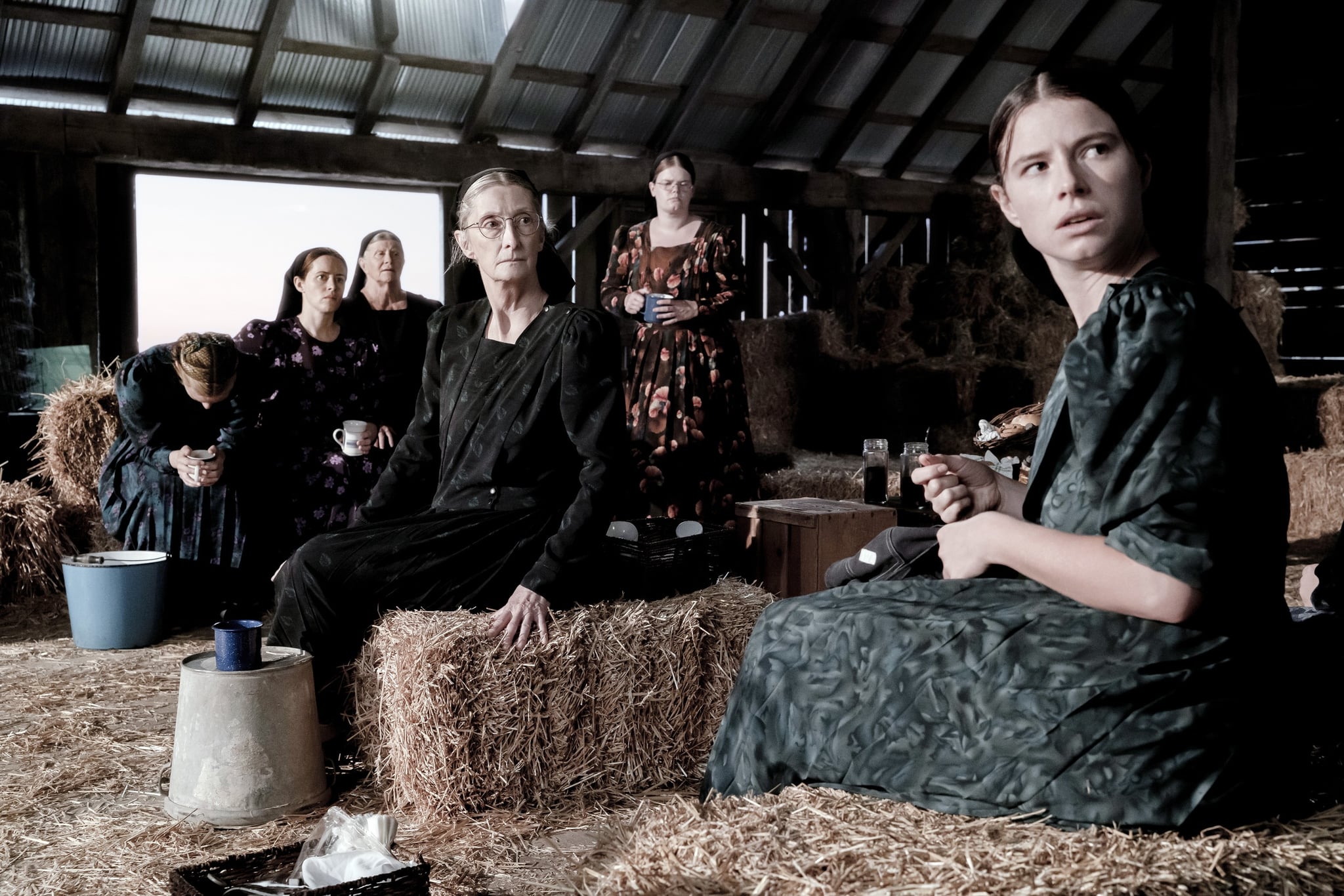
Content warning: This article contains descriptions of sexual harassment and assault.
Critics have been buzzing about the Oscar potential of the movie “Women Talking” since its world premiere at the Telluride Film Festival in September. The movie, based on the novel of the same name by Miriam Toews, follows a group of eight Mennonite women who have 48 hours to decide their future. They’ve recently realized men in their community have been secretly drugging and raping women for years. The perpetrators have been arrested, but the women must decide whether they should stay in the community that allowed them to come to harm or leave everything they know.
Sarah Polley directed and wrote the screenplay, and the ensemble cast includes Rooney Mara, Claire Foy, Jessie Buckley, Ben Whishaw, and Frances McDormand. Here’s what we know about the inspiration for the film.
The Inspiration Behind “Women Talking”
While “Women Talking” is not a true story, actual events that transpired in Bolivia in 2009 inspired the film. According to a 2011 Time report, a woman in a closed Mennonite colony in Bolivia awoke in the middle of being sexually assaulted. What eventually unfolded was the revelation that between 130 and 151 women and young girls in the colony had been routinely drugged with livestock anesthetic and attacked in their beds. For years, they had woken with inexplicable pain, lethargy, or sometimes evidence of the attacks, but shame, confusion, memory loss, and the deeply religious and patriarchal roots of the society delayed the realization that the attacks were not singular events. After the women started sharing stories, they found the strength to speak out, and eventually, eight men were charged with various crimes.
In a 2019 interview, Toews told NPR, “Even at the trial, the real trial of these rapists, the women weren’t allowed to testify themselves. Men did it. And, of course, there’s no recourse for them when these types of things happen. And even if these crimes, even if these types of rapes aren’t still happening — even though the rumor is that they are still happening — the number of incidents of male sexual violence … are so high in these closed colonies, and it doesn’t take a lot to see why.”
“Women Talking” focuses on a fictional series of meetings the women hold after the men have been arrested for their crimes. Toews has said in multiple interviews that it was important to her to focus on the aftermath rather than the violence. She told NPR, “When I heard about what had happened in Manitoba Colony in Bolivia, I was horrified like everybody else. But I also had all of these questions, questions that I’ve had all of my life, having been born and raised and grown up in a conservative Mennonite community. And I wanted these women to ask each other these questions and to have that conversation.”
Is “Women Talking” an Accurate Account of Living in a Mennonite Colony?
Toews grew up in a conservative, but not fully closed, Mennonite colony in Canada that she left when she turned 18. When asked how that colony compared to the closed colony she writes about in “Women Talking,” Toews told NPR, “It’s similar in that the rules are very much the same. Certainly, the misogyny within the culture, the culture of control, discipline, guilt, et cetera. But some of the details were very different. […] in these closed colonies — for instance, the one at the heart of the book — the women, you know, really in my opinion, are prisoners, in a sense. They don’t speak the language of the country that they’re in, they don’t read and write, they don’t leave the colony without being accompanied by a man.”
Toews also used her experience in a Mennonite colony to capture the heart of the story: how women talk. In 2018, she told The Guardian, “I’ve spent a lot of time with Mennonite women, and there’s a certain kind of natural, inherent storytelling capacity. Not to the point where they’re being disobedient. They know their roles, and they play them. But when they get together, there’s a lot of laughter and their own kind of coded, rebellious exchange. I wanted to get that into the book.”
Are the Characters in “Women Talking” Based on Real People?
The characters in “Women Talking” have no one-to-one real-life counterparts. Toews told The Guardian, “My goal is always to tell a story and to create characters that will move the reader. But I’m, of course, a feminist. I have a need to challenge that status quo that I’ve experienced.”
In the same interview, Toews also spoke of August, the outcast male character who joins the women’s meetings as the secretary, keeping the minutes that form the novel’s structure. “August is inspired by my own father, especially his gentleness. My dad was a teacher, too. [To others], there was always something suspect about him. He was considered effeminate or demasculinized. Men’s options are so limited, too.”
“Women Talking” is screening now in select theaters.
